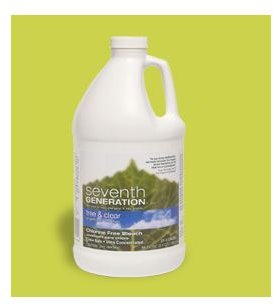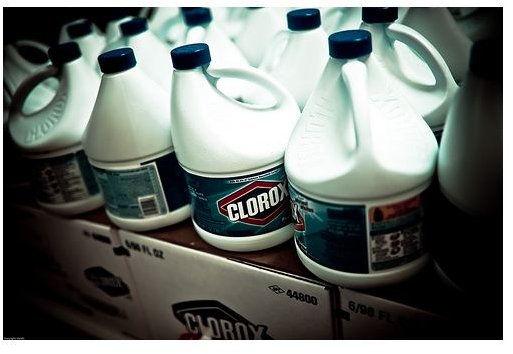What is Non-Chlorine Bleach? How Non-Chlorine Bleaches Work to Whiten Clothes and Kill Germs
Steer Clear of Chlorine Bleach
When you buy standard chlorine bleach at the store, you are buying a 5.25% solution of sodium hypochlorite solution in water. Chlorine is a powerful whitener and disinfectant, but can cause negative health effects in people, plants, and animals. Accidental ingestion of chlorine bleach can cause corrosion of the esophagus and gastrointestinal tract. Inhalation of chlorine gas emitted from household bleach can cause nose and throat irritation.
Chlorine bleach is effective at killing bacteria, viruses, molds, and fungi. When chlorine bleach is released into the environment beneficial organisms can be killed before the chlorine gas evaporates into the air. Using non-chlorine bleach as an alternative ensures the safety of your family and your local water system.
Understanding the Power of Oxidation
To understand how non-chlorine bleach works, you need to know a little chemistry. Colors are visible when a molecule absorbs certain wavelengths of visible light and reflects others. The region of a molecule where this occurs is called a chromophore. When elemental oxygen is present the oxygen reacts with the chromophore and destroys it’s structure, thereby eliminating the color.
Different bleaching products act as oxidizing agents, standard chlorine bleach being only one of them. Several other chemical compounds can also whiten clothes through oxidation, including hydrogen peroxide and other common non-chlorine bleach ingredients such as sodium percarbonate and sodium perborate.
Non-chlorine bleaches are effective on stains and spills without destroying the color of the fabric. Their oxidizing powers are not as strong as chlorine bleach. This is why non-chlorine bleaches are “color safe”. Non-chlorine whiteners are safer to use around the house and gentler on the environment, too.
Do Non-Chlorine Bleaches Disinfect?
The oxidation process that helps eliminate stains and whiten clothes also acts to destroy cell membranes of small organisms like bacteria and fungi. As mentioned above, non-chlorine bleaches are not as powerful of oxidizing agents as is chlorine bleach. Chlorine bleach, therefore, is more effective at disinfecting than non-chlorine bleaches.
Hydrogen peroxide is a non-chlorine bleach that can kill certain types of microbes through oxidation. Hydrogen peroxide can be used to sanitize countertops and other household surfaces. According to the EPA’s online hydrogen peroxide fact sheet, “hydrogen peroxide breaks down rapidly in the environment to oxygen and water, and is not expected to cause adverse effects to humans or the environment when users follow label directions.”
To use hydrogen peroxide to kill germs in your home, purchase a bottle of 3% hydrogen peroxide at a grocery or drug store. The solution can be used in many ways: as a kitchen or bathroom counter spray, a sanitizer for cutting boards and dishes, or a disinfecting soak for toothbrushes and sponges.
Shopping for Non-Chlorine Bleach
Many non-chlorine bleaches are available in the laundry section of your local store, offered in powder or liquid forms. Clorox 2 is a

non-chlorine bleach containing hydrogen peroxide as an active ingredient. Other eco-friendly brands include Seventh Generation, BioKleen, and Ecover. Oxyclean and other oxygen-based whiteners are non-chlorine bleaches as well.
Picture Credit
Bleach: https://www.flickr.com/photos/vox_efx/3591789044/
7th Generation Non-Chlorine Bleach: https://www.seventhgeneration.com/Chlorine-Free-Bleach
